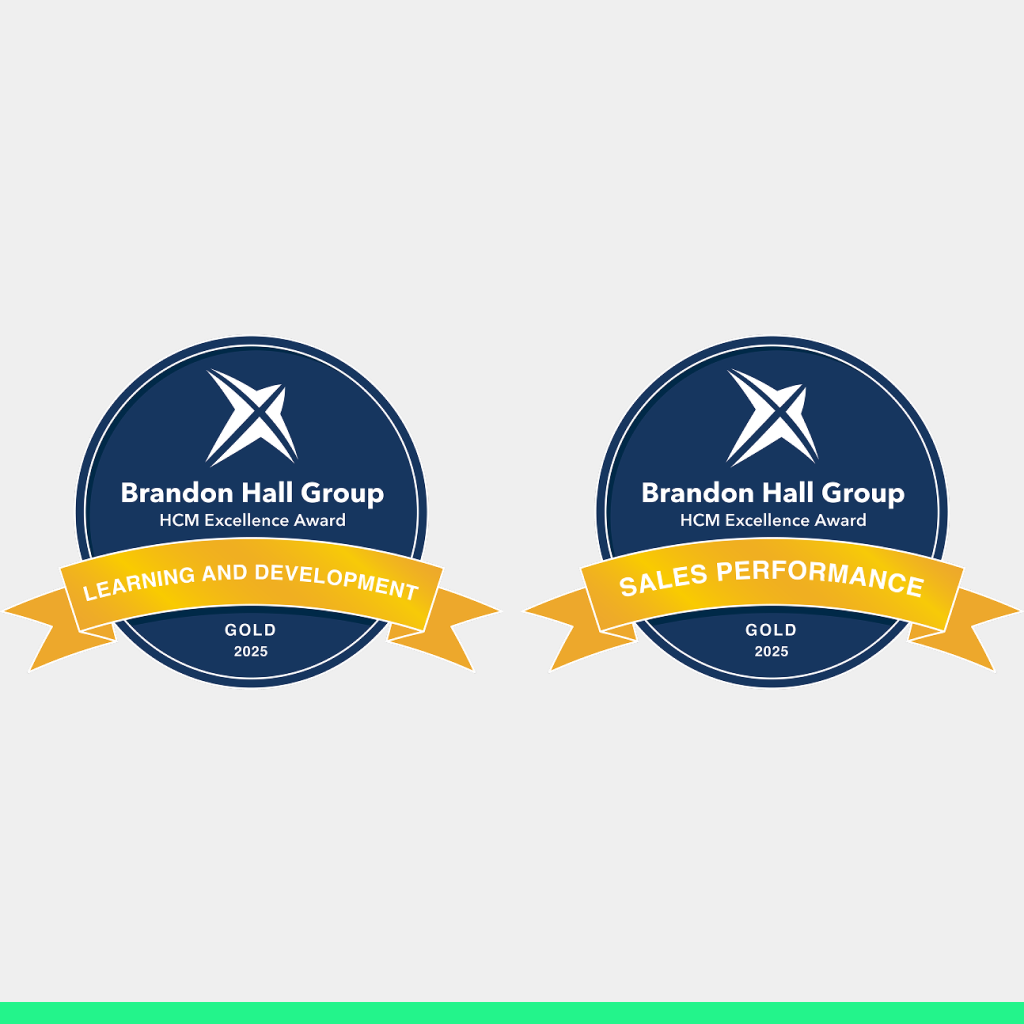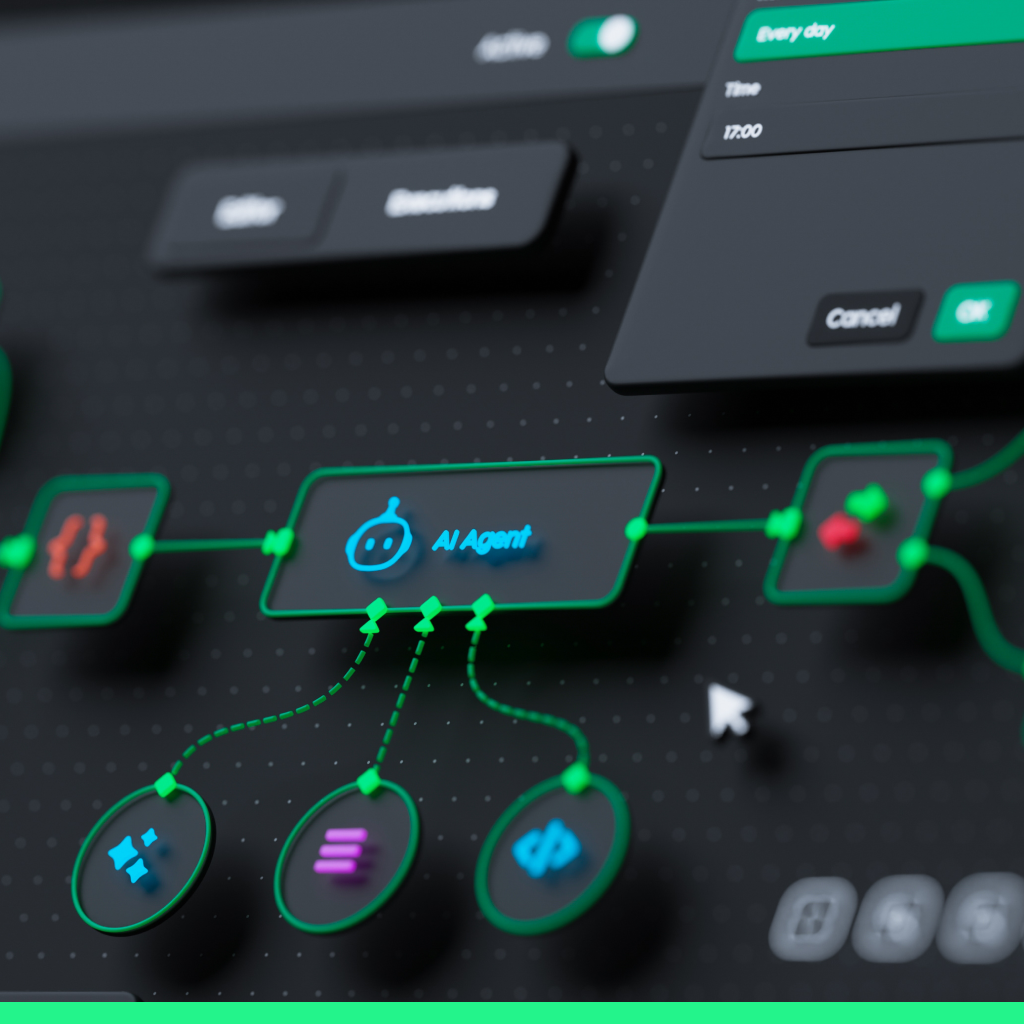Creating a digital learning experience, whether for customer education, partner training, or other training needs, is a major investment. To ensure your program is working, spot opportunities for improvement, and maintain executive support, you need to measure its effectiveness.
Default analytics from your LMS don’t tell the whole story, but more data isn’t always better either. Spend your time and effort wisely by measuring the right things.
There are two key areas to measure:
- Learner Outcomes – Is the program delivering results for learners?
- Business Outcomes – What is the ROI of the program?
This post focuses on measuring learner outcomes—how to tie metrics to program goals and identify what data you need and where to find it.
Connecting Learner Data to Program Goals
Say you are a financial services organization and you have a training program to educate independent financial advisors on the benefits of your products. Through your LMS you can track logins and course completion rates. You can see that people are using the program, but how do you know it’s working?
To measure the effectiveness of your training program, start with what you designed it to do in the first place.
- What was the original purpose of your programs?
- What target learner outcomes did you identify?
- What do you want learners to do or achieve after completing your program?
Once you identify a goal (or a few), map them to a specific objective. Next, find data that can demonstrate progress toward your objectives.
For the financial services example, this could look like:
- Goal: Launch new product line into a new market
- Learning Objective: Train channel sales organization on both new products and new market
- Indicator: 90% of learners report feeling confident selling into new market
- Data source: Pre/post course surveys
Types and Sources of Learner Outcome Data
Many off-the-shelf LMS platforms have default analytics included, but you’ll need to go beyond these to get a clearer picture of learner outcomes.
Once you know the objectives you want to report on, it can help to start by exploring the data you already have available. You might have what you need, or you may need to gather more data. Here are some types of data and sources where you can find them.
- Platform Analytics – LMS data: enrollments, completion rate, time spent in course, interaction with discussion forums or collaborative tools
- Assessment Scores – pre- and post-course tests, quizzes and tests, self-assessment surveys
- Learner Sentiment – feedback surveys, post-training reflections and suggestions, CE credits awarded, NPS scores, CSAT scores
- Learner Value – feedback surveys, self-reported application of skills and outcomes
- Behavior Change – on-the-job observations, follow-up interviews with learners or managers, behavior checklists before and after training, decrease in support tickets
Depending on what you’re measuring you’ll likely have a blend of qualitative and quantitative data. Qualitative data helps bring the numbers to life and give context to your data. Look for signals in your numeric data and use qualitative data to dig deeper and understand why learners are behaving a certain way. For example, if your LMS analytics show drop off around halfway through the course, interview learners to see what’s prompting disengagement.
What Data to Collect to Measure Learner Outcomes
Usually, the biggest challenge isn’t finding data–we’re all drowning in data. Rather, it’s identifying the right metrics to measure meaningful progress.
When selecting indicators, it’s important to differentiate between outcome-based and usage-based indicators, which serve different but complementary purposes.
Usage-based Metrics
Usage-based metrics focus on learner behavior—how often, how long, and in what ways participants engage with your content. These data points help you understand the level of interaction with your learning platform or materials. While valuable for diagnosing friction points or gauging interest, usage metrics don’t directly measure learning or impact. Instead, they tell you who is showing up and how.
Examples include: Logins, Session duration, Pages or modules visited, Engagement with specific TEs or quizzes.
Outcome-based Metrics
Outcome-based metrics measure the results or impacts of engagement, such as skill acquisition, satisfaction, and application of learning in real-world scenarios. These metrics reflect what learners take away and apply. This category is essential for evaluating whether your learning program is actually effective, not just engaging.
Examples include: Quiz and assessment scores, Task completion rates and post-course application surveys, NPS and feedback sentiment, Re-enrollment and referral rates.
Leading vs. Lagging Indicators
Both usage- and outcome-based metrics can be further categorized as leading or lagging indicators, depending on when they occur and what they reveal.
Leading indicators happen early in the learning process and are often predictive of future outcomes. Leading indicators give you a real-time pulse on what’s working and where intervention may be needed. They often overlap with usage-based metrics.
Lagging indicators show up later, often after the learning has been applied. They represent the end results or consequences of behavior change. Lagging indicators are the gold standard for demonstrating value, but they take longer to observe and are often influenced by multiple factors.
Program Maturity
You should measure both usage-based and outcome-based metrics, but measuring everything isn’t realistic or the most helpful approach. Early-stage learning experiences will rely on usage-based, leading indicators. Established programs will have outcome-based, lagging indicators once learners have had time to complete the program and apply their learnings.
Level of Engagement
Studion groups metrics into a hierarchy that shows how engaged a learner is with your program based on actions they’re taking. Ideally, as your program matures, your objectives will shift from baseline engagement (access) to high engagement (value and preference). This chart shows example indicators and data sources for each level of engagement.
| Objective | Indicator(s) |
| Access | -Number of users who have logged in |
| Knowledge and skill building | -Number of users who have completed one or more actions of a certain type (e.g. quizzes) -Assessment scores |
| Utility | -Number of users who have completed “utility” activities (e.g. downloaded takeaway materials) |
| Value | -Number of users who return x number of times -NPS |
| Preference | -Number of users who interact with 3+ distinct content types or topic areas across multiple sessions |
Best Practices for Measuring Learner Outcomes
Focus on a small number of metrics
Start with a small set of meaningful metrics that directly align with your program’s goals. Focus on insights that will drive decisions, rather than just tracking everything available.
Go beyond vanity metrics
Metrics like enrollments and logins speak to reach and access – helpful to track, but not the full picture.
Know what metrics matter to leadership
Identify the key data points leadership values and incorporate them into your reporting. This alignment helps secure continued support and funding.
Interpret data & surface insights
Data alone doesn’t provide answers. It’s what you do with it that matters. Analyze the data to see what content is most effective, where learners drop off or struggle, and more.
Determine measurement cadence
Learning outcomes evolve over time. Establish a regular review schedule (that is realistic for your team) to track trends and drive continuous improvement.
Ask the right questions in your survey
Design surveys for the data you need and keep it concise. The longer the survey, the less likely your learners are to finish it. If you could only ask five questions, what would they be?
Learner Outcomes Drive Business Success
For an online learning program to be truly effective, learner outcomes must come first. When training delivers real value to learners, business outcomes can follow. By measuring what truly matters, you can build a learning experience that is impactful, sustainable, and aligned with your organization’s goals.
The next step is measuring business outcomes—mapping the indicators of success for learning outcomes to indicators of success for your business. We’ll show you how to translate your program’s effectiveness into what it means for your business’s bottom line.




